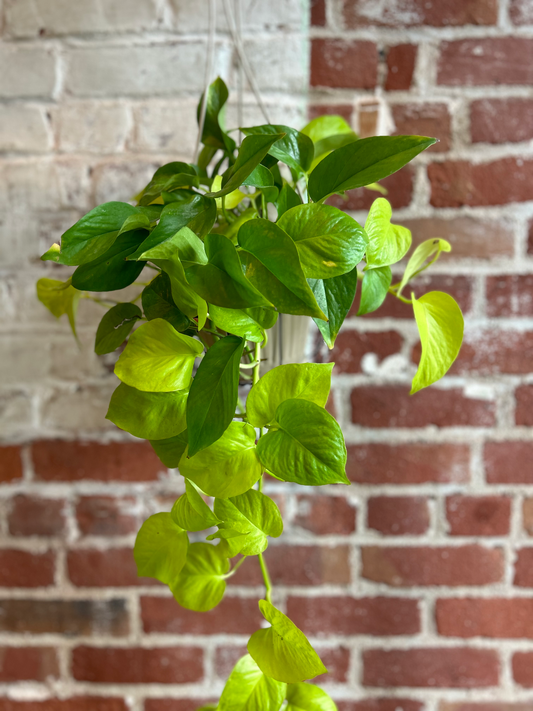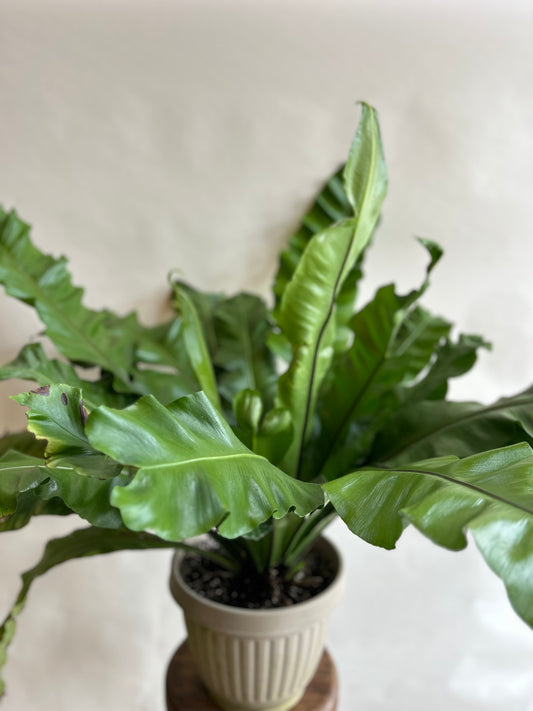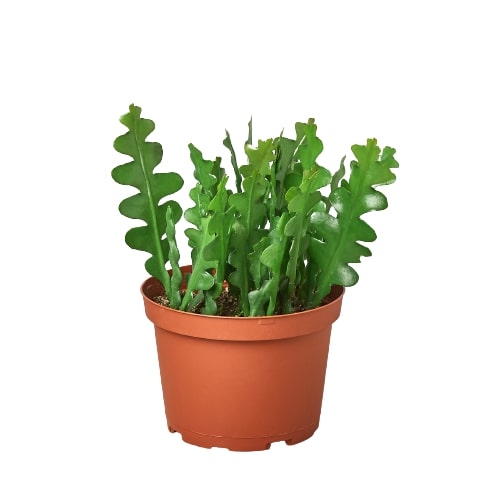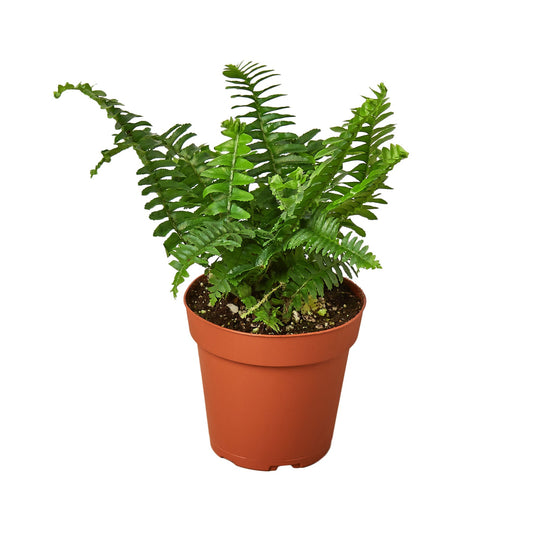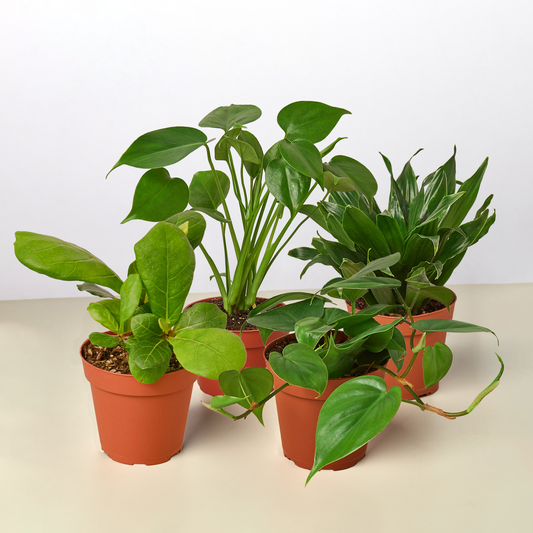Do Air Plants Bloom? A Guide to Air Plants Flowers
Cafe Planta Team
Air plants are the quirky, low-maintenance wonders of the plant world. Known for thriving without soil, these fascinating plants, also called Tillandsias, have captured the hearts of plant lovers everywhere. But one question often arises: do air plants bloom? The answer is a resounding yes, and their flowering can be quite the spectacle!
This article will take you through the blooming process of air plants, what you can expect, and how to care for them to encourage these blooms. We'll also explore what happens after your air plant flowers and how you can continue to nurture these fascinating plants. So, let's get started on this journey into the blooming world of air plants!
Understanding the Blooming Process
Air plants have a unique and captivating blooming process that sets them apart from other houseplants. Unlike many plants that flower repeatedly, air plants bloom only once in their lifetime. This single bloom is a significant event, marking the plant's transition into a new phase of life.
The flowering process in air plants can vary significantly between species. Some might produce small, subtle flowers, while others burst into vibrant colors, showcasing shades of pink, purple, or red. These blooms can last anywhere from a few days to several months, depending on the type of air plant and the care it receives.
Before an air plant blooms, it often undergoes a color change. The leaves might take on a reddish or pinkish hue, indicating that the plant is preparing to flower. This is an exciting time for plant parents, as it signals the coming of a beautiful floral display. Once the plant blooms, it's essential to continue providing adequate care to support the plant's health and vitality.
What Triggers Air Plants to Bloom?
Several factors can influence when and how an air plant blooms. Understanding these triggers can help you create the optimal environment for your plant to flower. Here are some key elements that contribute to the blooming of air plants:
- Light: Adequate light is crucial for air plants to bloom. They thrive in bright, indirect sunlight. While they can tolerate some direct sunlight, too much can cause them to dry out or become sunburned.
- Temperature: Air plants prefer a warm environment. Temperatures between 50°F (10°C) and 90°F (32°C) are ideal. They can tolerate brief exposure to cooler temperatures, but prolonged cold can hinder blooming.
- Humidity: High humidity levels can encourage blooming. In drier climates, consider misting your air plants or placing them near a humidifier.
- Watering: Proper watering is essential. Soak your air plant in water once a week, allowing it to dry thoroughly afterward. Neglecting watering can stress the plant and delay blooming.
- Fertilization: While not always necessary, a diluted bromeliad or orchid fertilizer can provide a nutrient boost and encourage flowering.
By paying attention to these factors, you can create a supportive environment that encourages your air plant to bloom, rewarding you with a delightful floral display.
How Long Does the Bloom Last?
The duration of an air plant's bloom varies depending on the species and environmental conditions. Some air plants might only bloom for a week or two, while others can maintain their flowers for several months. Generally, smaller blooms tend to have a shorter lifespan, whereas larger, more striking flowers can last longer.
During the blooming period, it's crucial to maintain consistent care for your air plant. This includes providing the right amount of light, water, and humidity to ensure the plant remains healthy. It's also essential to avoid disturbing the plant while it's in bloom, as this can cause stress and potentially shorten the flowering period.
As the flower begins to fade, you might notice the plant's leaves returning to their original coloration. This is a natural part of the blooming process, signaling the end of the plant's flowering phase. While it may be tempting to remove the faded bloom, it's best to let it fall off naturally, allowing the plant to conserve its energy for future growth.
What Happens After an Air Plant Blooms?
After an air plant blooms, it enters a new phase of its life cycle. This phase involves the production of "pups," which are small, baby plants that grow from the base of the parent plant. Pups are the key to propagating air plants and ensuring their continued presence in your home.
Once the bloom has faded, it's essential to monitor your air plant for the appearance of pups. These baby plants can take several months to mature, depending on the species and care they receive. As the pups develop, they will gradually grow and become independent of the parent plant.
When the pups are about one-third to one-half the size of the parent plant, they can be separated and cared for as individual plants. This process is relatively simple and can be done by gently tugging or cutting the pups away from the parent. Be sure to handle them carefully to avoid causing damage.
Continuing to care for the parent plant is essential, even after it has produced pups. While the plant will not bloom again, it can still thrive and provide a living environment for the new pups to grow. This ongoing care ensures the health and vitality of your air plant collection.
How to Care for Air Plants After Blooming
Caring for air plants after they've bloomed is crucial for their longevity and the successful growth of pups. Here are some tips to help you maintain healthy air plants after the flowering phase:
- Continue Proper Watering: Regular watering is essential. Soak the plants in water for 20-30 minutes once a week, allowing them to dry completely afterward. Ensure any excess water is removed to prevent rot.
- Maintain Light Conditions: Keep your air plant in bright, indirect light. This helps them stay healthy and supports the growth of pups.
- Monitor Humidity: Maintain a humidity level of around 50-60% for optimal growth. If your environment is dry, consider misting the plants regularly.
- Trim Dead Leaves: Remove any dead or brown leaves to keep the plant looking its best and prevent disease.
- Fertilize Sparingly: If you choose to fertilize, use a diluted bromeliad or orchid fertilizer once a month during the growing season.
By following these simple care guidelines, you can ensure that your air plants remain healthy and vibrant after blooming, paving the way for a thriving collection of pups in the future.
Encouraging Pups to Thrive
Once your air plant has produced pups, it's time to focus on helping them grow into healthy, mature plants. Here are some tips to encourage the successful growth of air plant pups:
- Provide a Stable Environment: Ensure the pups receive consistent light, water, and humidity, just like the parent plant.
- Be Patient: Pups can take several months to grow to a size suitable for separation. Allow them time to develop naturally without rushing the process.
- Separate Carefully: When the pups are ready, gently separate them from the parent plant by either pulling or cutting them away with sanitized scissors.
- Monitor Growth: Keep an eye on the pups as they grow, adjusting their care as needed to support their development.
By nurturing your air plant pups, you'll be able to expand your collection and enjoy the unique beauty of these fascinating plants for years to come.
Common Mistakes to Avoid
While caring for air plants might seem straightforward, there are a few common pitfalls that can hinder their growth and blooming. Here are some mistakes to watch out for:
- Overwatering: Air plants are susceptible to rot if they remain too wet. Ensure they dry completely after soaking to prevent this issue.
- Insufficient Light: Without adequate light, air plants can struggle to bloom and grow. Ensure they receive bright, indirect sunlight.
- Ignoring Humidity: Air plants need a humid environment to thrive. If your home is dry, consider misting or using a humidifier to maintain optimal conditions.
- Neglecting Fertilization: While not always necessary, occasional fertilization can support growth and blooming. Use a diluted, plant-specific fertilizer during the growing season.
- Disturbing the Plant: Avoid handling or moving the plant excessively, especially during the blooming phase, as this can cause stress and shorten the bloom's lifespan.
By steering clear of these common mistakes, you can create a healthy environment for your air plants, ensuring they bloom and thrive.
How to Display Your Air Plants
Air plants offer endless possibilities for creative displays in your home. Their unique appearance and ability to grow without soil make them perfect for a variety of settings. Here are some fun and innovative ways to display your air plants:
- Glass Terrariums: Place your air plants in glass terrariums to create a striking, modern display. Add decorative elements like stones, shells, or moss for added visual interest.
- Hanging Planters: Suspend air plants in hanging planters or macrame holders to create a floating garden effect. This adds an element of whimsy and elegance to any space.
- Mounted Displays: Attach air plants to driftwood, cork bark, or other natural materials for a rustic, organic look. Use non-toxic glue or wire to secure them in place.
- Wall Art: Incorporate air plants into living wall art by attaching them to a frame or grid. This creates a stunning, ever-changing piece of art for your home.
- Table Centerpieces: Arrange air plants with candles, stones, or other decorative items to create a beautiful, low-maintenance centerpiece for your dining or coffee table.
Experiment with different display options to find the perfect arrangement that complements your home's décor and showcases the unique beauty of your air plants.
Frequently Asked Questions About Air Plant Blooms
As air plant blooms are a unique and intriguing phenomenon, it's natural to have questions about the process. Here are some common inquiries and their answers:
- Do all air plants bloom? Yes, all air plants have the potential to bloom, though the frequency and appearance of blooms can vary between species.
- How often do air plants bloom? Air plants generally bloom once in their lifetime. After blooming, they focus on producing pups rather than flowering again.
- Can I force my air plant to bloom? While you can't force an air plant to bloom, providing optimal care and conditions can encourage blooming.
- What should I do if my air plant doesn't bloom? If your air plant isn't blooming, assess its care routine and environment. Ensure it's receiving adequate light, water, and humidity to support flowering.
By understanding the unique characteristics and needs of air plants, you can enjoy their beautiful blooms and continue to cultivate a thriving collection.
Final Thoughts
Air plants are living works of art, and their blooms are one of the many reasons they're so beloved. By understanding their blooming process and caring for them properly, you can enjoy these stunning displays and nurture a thriving air plant collection.
At Cafe Planta, we're here to help you on your plant journey. Whether you're looking for new plant friends or need advice on caring for your existing collection, we're happy to assist. Feel free to reach out to us via email or connect with us on Instagram. Let's grow together and celebrate the joy of plants!


